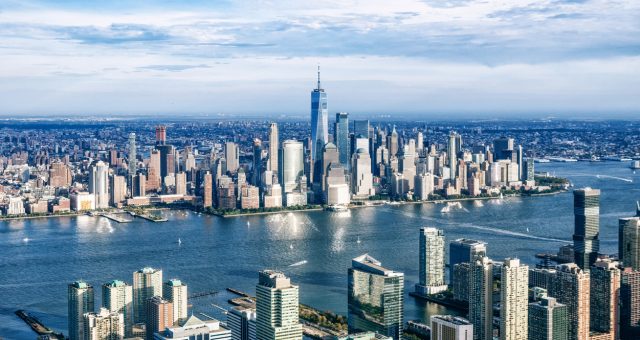New Jersey-New York: Uh-Oh?


As states across the country grapple with how to ensure “infrastructure resiliency” in the face of climate change, decision making, project planning and regulatory debate is heating up in New Jersey and New York. What happens when transit challenges, rising temperatures and outdated codes collide?
More Questions Than Answers?
That seems to sum up the current tangle of infrastructure considerations confronting New Jersey and New York. Indeed, as reporters from Engineering News Record share some of the key discussions from a recent ENR NY-NJ Infrastructure Forum, it’s not hard to see that there’s a lot of figuring out to do:
New Jersey’s heightened climate change risk makes the push for infrastructure resilience critical in a state with close to 130 miles of mostly developed coastline, the third fastest-rising temperatures among U.S. states and a FEMA-recorded flood loss total that is second only to Texas. With such stats, Shawn LaTourette, commissioner of its Dept. of Environmental Protection, told the ENR NY-NJ Infrastructure Forum that “climate mitigation touches every sector of our industry and society.”
This includes addressing what caused a nine-mile algae bloom two years ago that “affected one of the state’s most consequential drinking water intakes,” he said to more than 430 industry attendees at the Manhattan event, noting the urgency of steps being taken to ensure “we are building in a resilient manner … if we are to avoid more catastrophic impacts.”
Noting that the data used to inform project decisions is outdated, New Jersey leaders are considering “supportive statewide regulatory reforms,” including, “amendments to existing state flood hazard, stormwater, coastal zone and freshwater wetland regulations,” to address a projected “2-ft sea level rise affecting New Jersey by 2050.” Known as Resilient Environments and Landscapes Rules (REAL), the regulations “would create coastal inundation zones that require 5 feet of elevation in new structures, and also in redeveloped ones that were previously exempt.”
Remember The Francis Scott Key Bridge Collapse?
What’s next? While New Jersey contends with strong opposition to new regulations aimed at making infrastructure more resilient in the face of climate change, signs of the need to adjust to the modern era abound. For example, the Port Authority of New York and New Jersey is confronting numerous risks to bridges:
A new engineering study released Sept. 23 by Johns Hopkins University cited the Verrazano Narrows bridge in New York City as No. 1 among its top ten U.S. spans facing risk from “megaships” longer than 300 meters, and Bayonne Bridge between Staten Island and New Jersey ranked at No. 5.
“We’re asking, ‘What is the probability of a very large ship taking out another bridge?’ and to get at that question, the first thing we have to do is understand the actual ship traffic under major bridges across the U.S.,” said Michael Shields, a university civil engineering professor and risk assessment specialist who led the National Science Foundation-funded study of about 200 bridges. “It’s very clear where the heavy traffic is happening and these bridges should be prioritized for more careful and rigorous risk analysis,” he said. More study results will be released next year.
Ready For Some Good News?
If you’re a builder and eager to grow your business, there’s plenty of work ahead–and even getting underway now–addressing infrastructure resilience. Consider the recent allocation of $1 billion for 656 FEMA projects across the county. Eighty projects to make “transportation systems more resilient to extreme weather” have also been targeted to receive a total of $830 million from The Department of Transportation. Uniquely, these funds are the “first of their kind dedicated to transportation infrastructure resilience.”
Ready to update your approach and dig into more of the action in your region? You can with The Partnership Account® for Contractors from Colonial Surety behind you. Receive Free Business Credit Scores today, just for completing our speedy Pre-Qual. Then, upon approval, you’ll have:
- Written Bonding Limits: Receive your single and aggregate bonding limits in writing.
- Instant Bid Bond Issuance: Gain the ability to issue your own bid bonds within minutes.
- Real-Time Visibility: Log in to view your underwriting profile and financial scores in real time.
Ready to move ahead? Start here, today:
The Partnership Account® for Contractors
Founded in 1930, Colonial Surety Company is a leading direct seller and writer of surety bonds and insurance products across the USA. Colonial is rated “A Excellent” by A.M. Best Company and U.S. Treasury listed. Let’s connect today: Colonial Surety.

